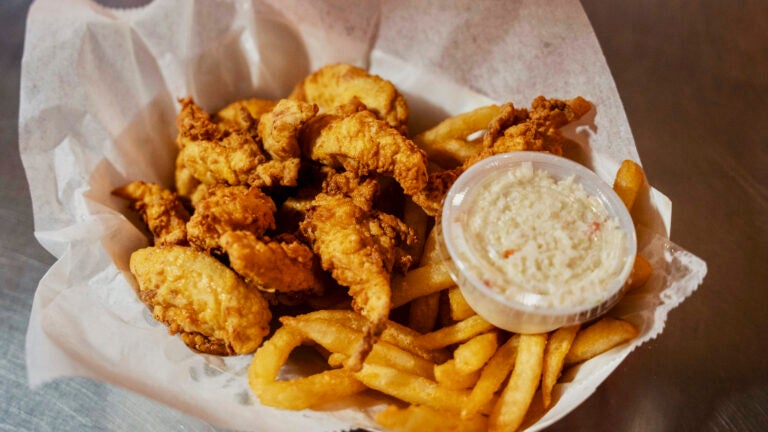Food
The breaded, fried tenderloin turns 50 this year. Yes, there was a time before it was sold in every cafeteria and airport.
MANCHESTER, N.H. — Fifty years ago, the breaded, fried chicken tender as we know it was invented in Manchester, New Hampshire.
At least, that’s what they say in Manchester. Such claims are usually impossible to prove, and the picture is clouded in this case because of the loose way the term chicken tender gets thrown around.
Those who are not particular about poultry terminology use tender to refer to any thin strip of boneless chicken. To people in Manchester and to chicken farmers, though, it means something specific: the tenderloin, a muscle along the breastbone that gets very little exercise, hence its tenderness. Restaurants were cooking chicken sticks and chicken fingers before 1974. So far, though, nobody has seriously challenged Manchester’s status as first in the nation to embrace the true tender.
Whether you fully accept the claim or not, though, the floppy strips of white meat in a deep-fried crust do seem to have first appeared around that time. If you were born in the United States more than 50 years ago, you can probably remember a world without chicken tenders. If you grew up later, you can’t.
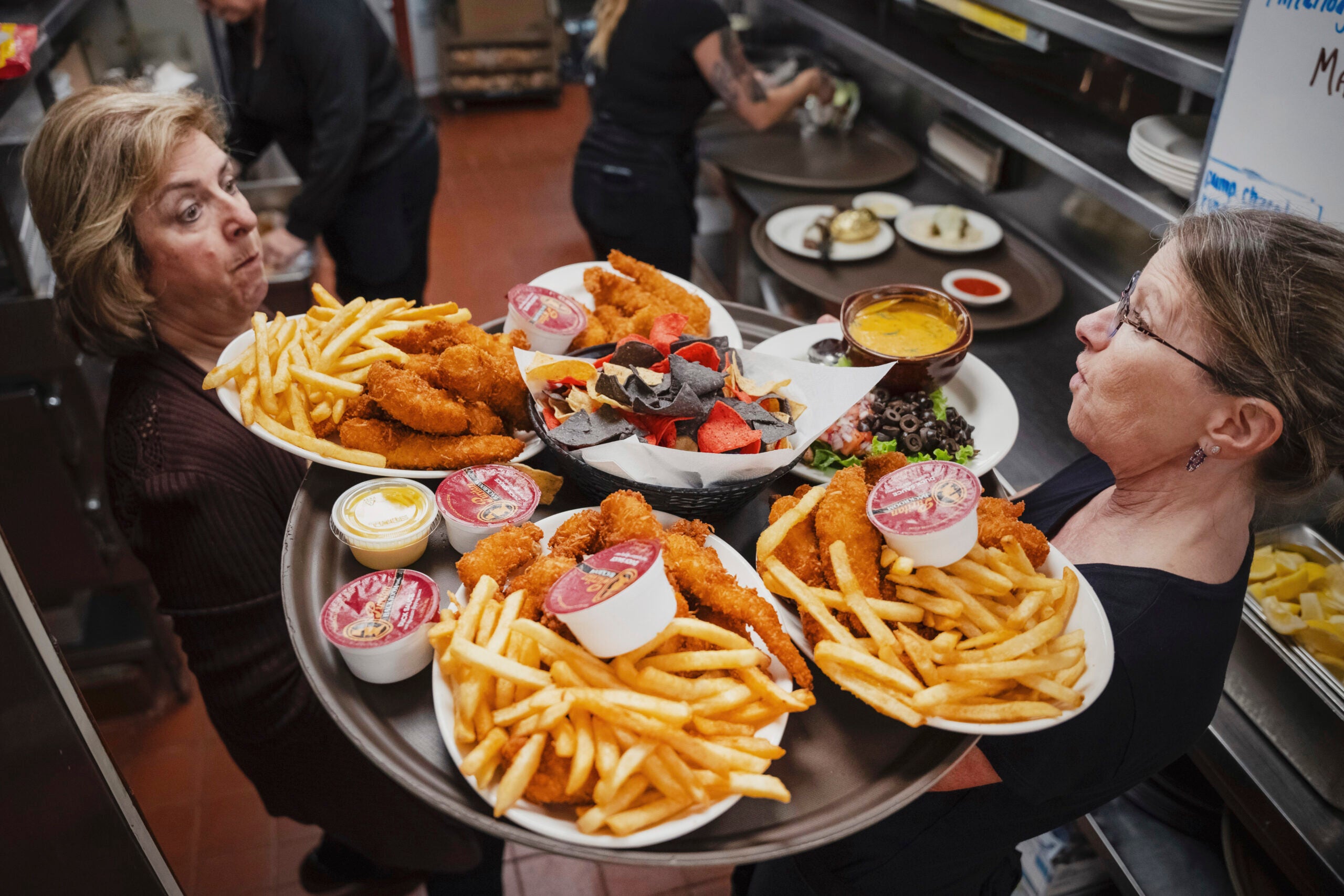
Today, the chicken tender is not just familiar. It is triumphant. It is a fixture of school lunches and kids’ menus, of all-night diners and gas stations. It can be found at airports, food courts and stadiums. It is a major reason for the double-digit sales growth that Chick-fil-A, Popeyes, Raising Cane’s and other chicken-centric chains have reported for five straight years.
Along the way, the chicken tender has become a symbol, although its meaning is hard to pin down. It can be an icon of simple, straightforward, unpretentious American taste. It can also be an expression of dull, unadventurous food engineered for the lowest common denominator. Restaurants, in their drive to stand out, have expended great effort devising crunchier breading, zestier dipping sauces, more tender tenders. And yet all the sauces in the world will never quite dispel the suspicion that the tender itself is, at heart, not very exciting.
If you share this suspicion, you probably shouldn’t voice it too loudly in Manchester. Last year, the city issued a formal proclamation declaring itself the Chicken Tender Capital of the World.
You can’t go very far in Manchester before bumping into a chicken tender.
They are sold at drive-in seafood shacks, coated in the same golden shell as the whole-belly clams. At a cafe in one of the hulking old mills beside the Merrimack River, they are served over waffles with hot honey and powdered sugar. A corner pizzeria in a residential stretch of northeastern Manchester is renowned for sweet and spicy Asian tenders that seem to be distantly related to General Tso’s chicken.


Like many stories about dishes that became touchstones of American cooking, the tale of the Manchester chicken tender starts with immigrants. In 1917, two men who were born in Greece and settled in Manchester, Arthur Pappas and Louis Canotas, opened a candy store downtown called Puritan. The shop grew and moved and grew some more.
In 1974, Pappas’ children added a large sit-down restaurant behind the shop, the Puritan Backroom. As one of them, Charlie Pappas, built out the menu, a fry cook told him “he had a small piece of chicken he didn’t know what to do with,” according to Charlie Pappas’ son, also named Arthur. This was the tenderloin.
“All it does is align the vertebrae,” said Russ Whitman, director of market reporting at Urner Barry by Expana, which tracks commodity prices. “It’s not used for walking or flapping the wings, so it is a very tender piece of meat.”
In those days, the tenderloin (or, to biologists, the pectoralis minor) was invariably sold with the rest of the breast attached. But if the bird was cut up before cooking, the tender has a habit of coming loose. This is what happened at the Puritan, where, after some tinkering, Charlie Pappas hit on a method for preparing it.
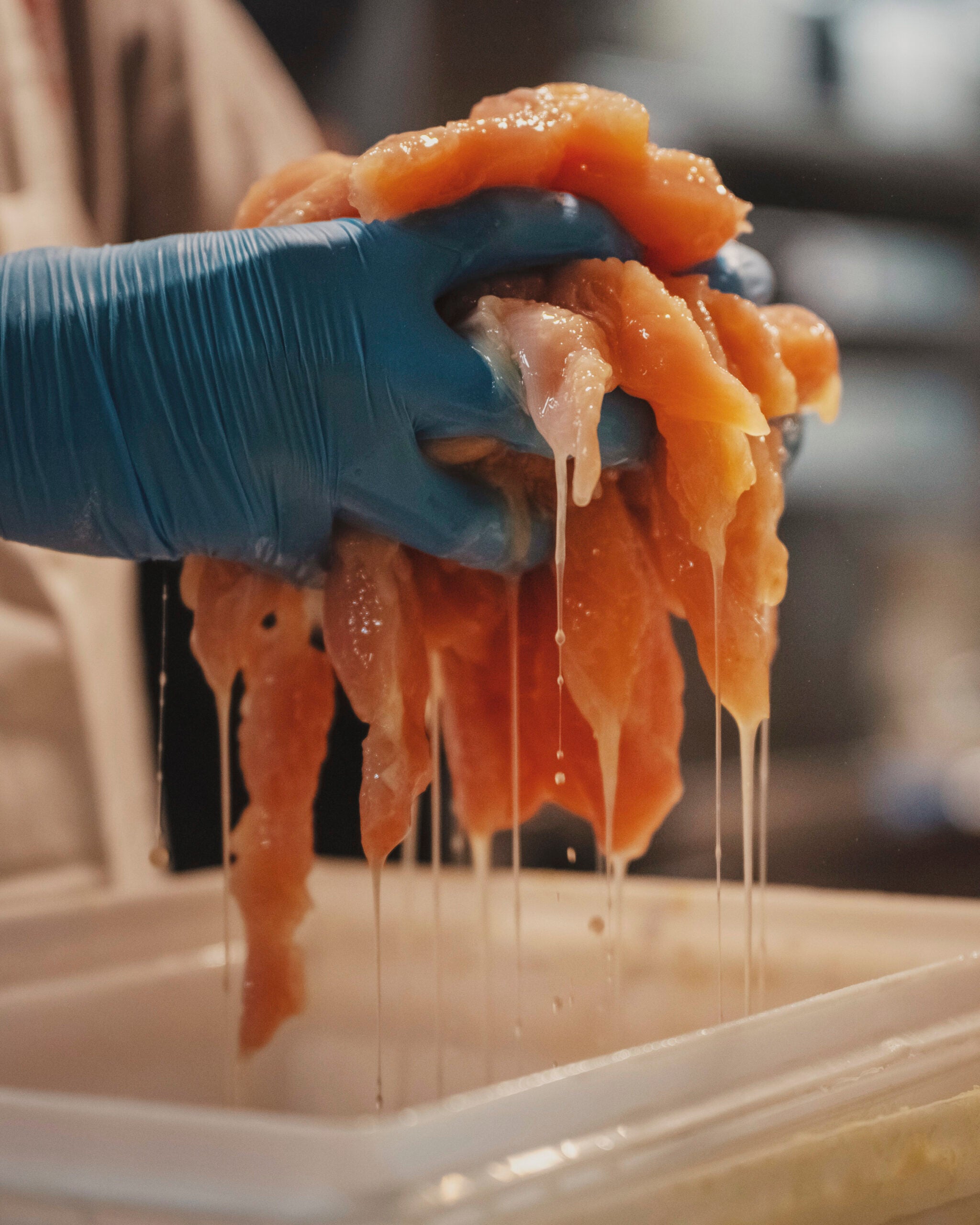
The recipe he devised is, in many ways, a peculiar item for a Greek-owned family restaurant in New England. For one thing, before it is fried, the meat soaks in a pineapple-juice marinade. It’s also served with what the Puritan calls “duck sauce,” a thinnish, yellowish, sweetish liquid. Arthur Pappas said that his father was inspired, in part, by the glowing orange condiment that Chinese restaurants give out with egg rolls, but that he experimented until “he came up with something he thought was a little different.”
In the early years, Charlie Pappas’ tenders were outsold by his barbecued lamb, broiled chicken breast and pizza. But something about the taste of fried white meat dipped in rejiggered duck sauce captured Manchester’s imagination. Word spread. Sales climbed. Imitators arose. Presidential candidates visiting the Puritan for meet-and-greets were obliged to eat a tender or two.
Slowly, inexorably, chicken tenders began to outsell everything else at the Puritan Backroom. At every birthday party, bar mitzvah and wedding celebrated at the restaurant, and there are many, tenders are mandatory. Although many, many tenders are eaten on site, even more leave the premises in takeout orders, sometimes in buckets of 150. On a typical week, Arthur Pappas said, the kitchen fries about 4 tons of tenders — 5 tons during the busiest times of year.
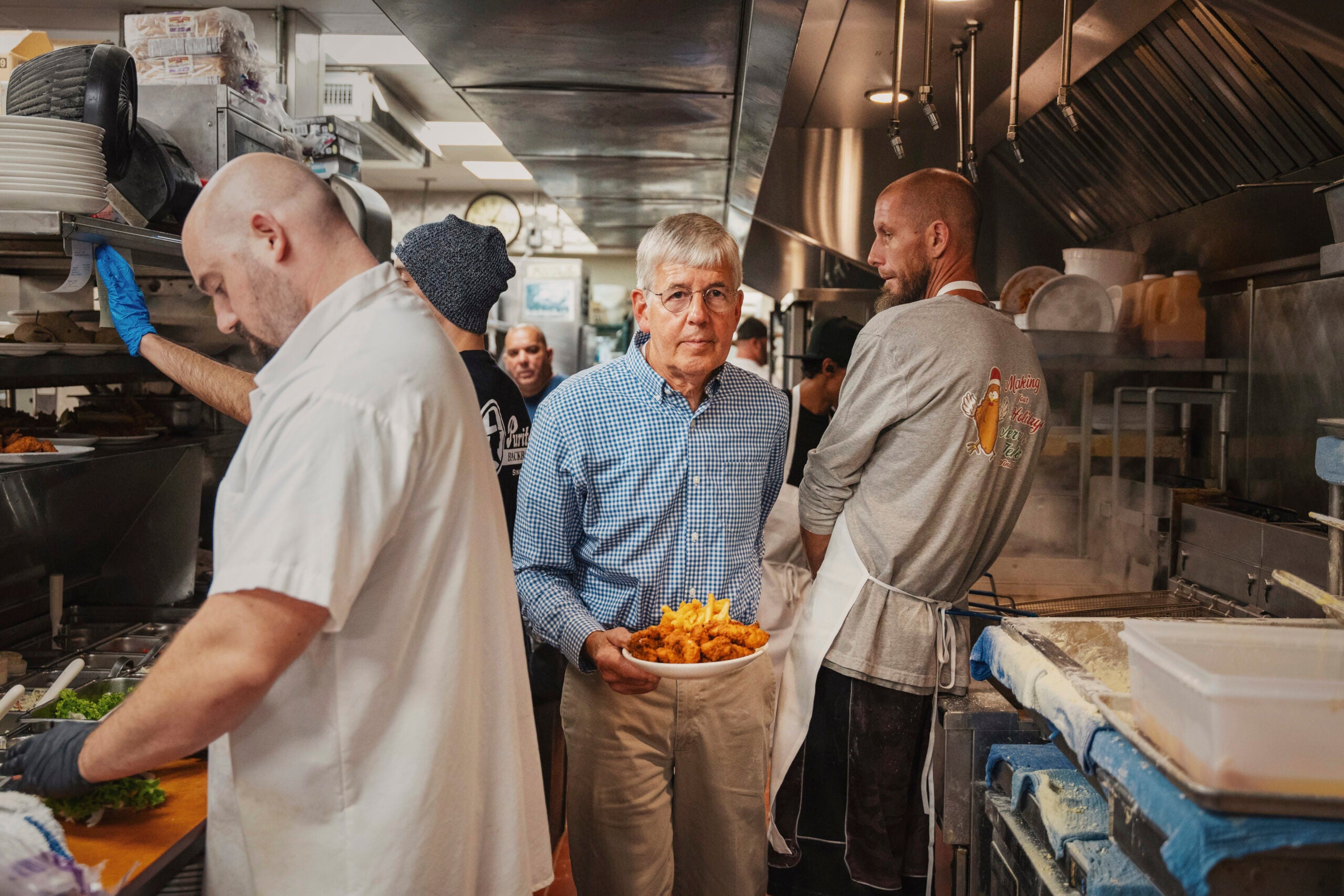
Despite their local fame, fried chicken tenders were almost unknown outside New Hampshire for at least a decade. That changed for good in the 1980s, when Burger King, jealous of the McNugget, introduced its own hand-held morsels of fried chicken. A $20 million advertising campaign for the chain’s new Chicken Tenders worked too well. When locations around the country ran out of chicken, Burger King had to pull the ads.
The campaign had another effect, according to lawyers for the restaurant: It inspired imitators to sell their own chicken tenders. Burger King sued one of them, a poultry-packing firm, for trademark infringement. The trial was more dramatic than the run-of-the-mill intellectual property proceeding; on one of the nine days, a professor showed the courtroom where tenders come from by breaking down a 3-pound plucked chicken with a butcher’s knife.
Burger King won its case — the jury decided that, in effect, the words chicken tender described a product rather than a mere muscle.
One result of the verdict is that tender became a marketing term, like chicken fingers. Many people think the two items are interchangeable, although few of those people live in Manchester. Tender connoisseurs have little trouble knowing when they’ve ordered a pectoralis minor and been given a pectoralis major instead.
Even with Burger King’s help, chicken tenders did not begin to move in meaningful numbers until 1999, when the U.S. Department of Agriculture noticed enough volume to start tracking their price, and then only in the Northeast. It was, at that time, one of the cheapest pieces of the bird by weight, which made it appealing to restaurants.
“Because it was an unused portion of the chicken, it was a value at the time,” Whitman said. Today it is the most expensive cut. (In second place is the wing, another byproduct of chicken breasts that rose to stardom in the same period.)
The tender has other things going for it, too.
“Some of the popularity of the tender is that it is whole-muscle white meat that doesn’t have to be cut or portioned, and when cooked it makes a great hand-held item,” said Terrence O’Keefe, the content director of agribusiness news at WATT Global Media. The tender could, in other words, go from the box to the batter to the deep fryer to the table in minutes.
It wasn’t that easy in 1974, when most chickens in the United States were sold whole, according to data from the National Chicken Council. Since them, there’s been a huge shift toward cut-up parts. As carving technology at poultry plants grew more sophisticated, it became easy for processors to separate the tenders from the rest of the breast and pack them on their own.
One trait of the chicken tender that seems to have very little to do with its success, though, is flavor. On its own, without marinades or sauces, it has almost none. It is a piece of protein so mild it won’t offend anybody, although that, come to think of it, may be what has allowed it to come so far.
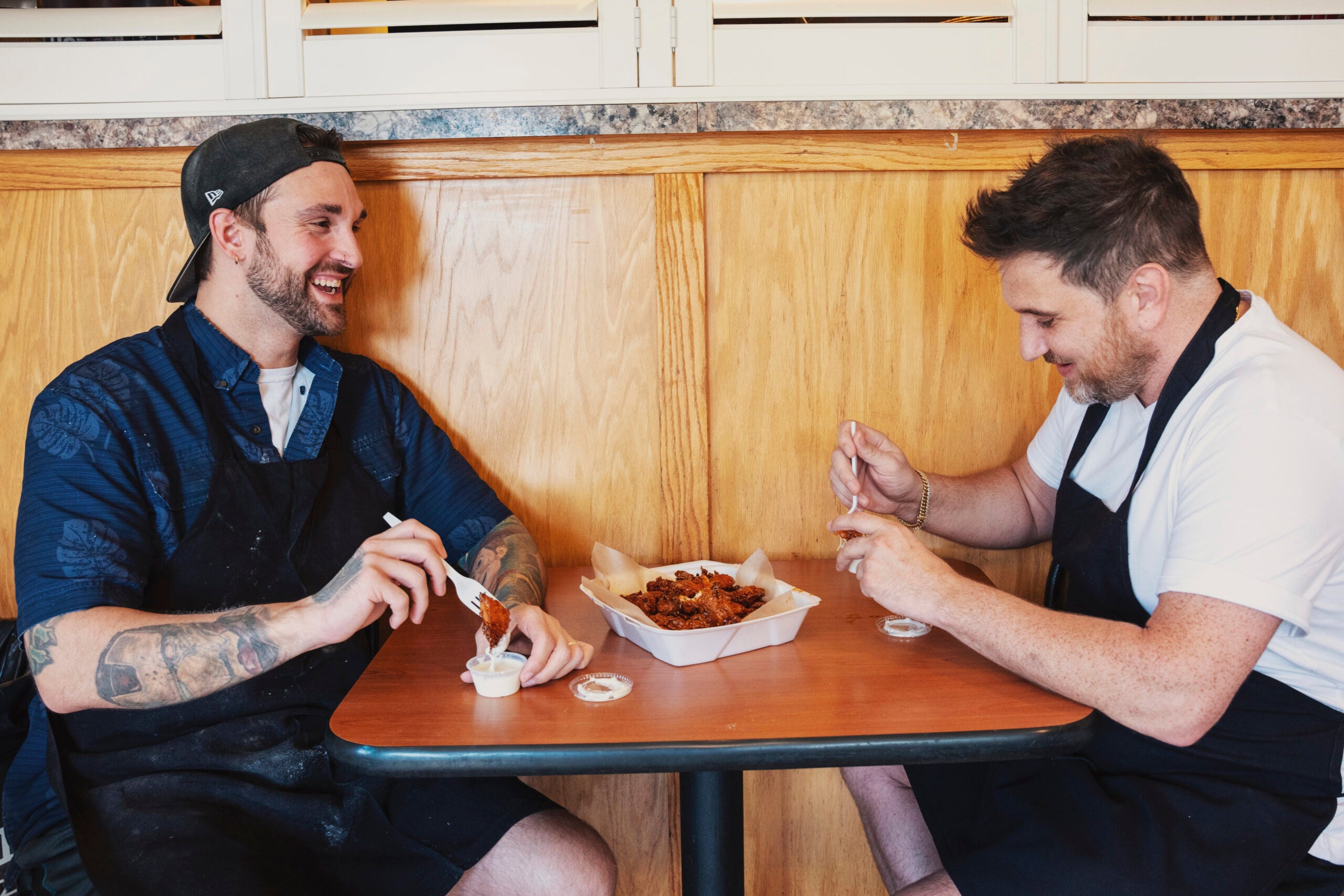
You could ask yourself why the least assertive part of the bird is the one Americans love best. You could wonder why no restaurant chain here has devoted itself yet to the French method of stewing gizzards to tenderness in duck fat, or cooking livers in pomegranate molasses in the style of Lebanon. You could get a little downcast thinking about how hard it is to find a good dish of cibrèo, the astonishing Tuscan stew of livers, hearts, coxcombs and testicles.
Or you could get creative, as the Puritan Backroom has done over the years. Besides its classic chicken tenders with duck sauce, the restaurant now offers tenders in a spicy breading, coconut-crusted tenders, and a version made by drenching the original recipe in Buffalo-wing sauce. Other restaurants will fry the meat in crushed cornflakes, Ritz crackers or Cap’n Crunch cereal. One brewpub offers more than a dozen sauces including Korean barbecue and Western apricot.
There’s something a little ridiculous about Manchester, the city that was once the center of the American industrial revolution, devoting so much energy to fried strips of chicken, and devoting itself so thoroughly that it can claim the title of chicken tender capital of the world. But there’s something impressive about it, too.
“It’s a silly idea,” said Nick Lavallee, who first went before the town aldermen to propose the declaration and kept bringing it up until the politicians surrendered.
“But you ask yourself: Is it true? Yes,” he went on. “Is it important? Sure. Manchester has had an identity problem. Why not point out the things worth celebrating?”
This article originally appeared in The New York Times.
